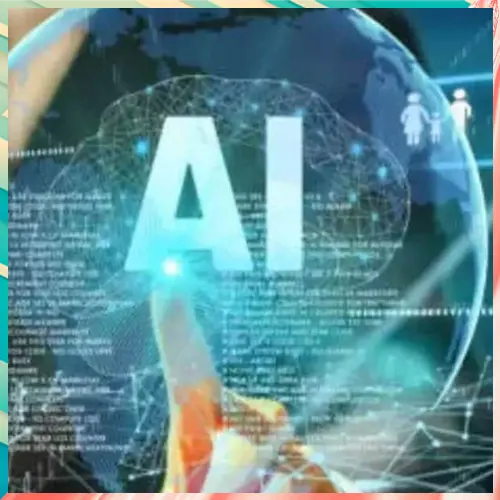Kerala High Court Introduces AI Guidelines for District Judiciary
Introduction
- In a pioneering move, the Kerala High Court (HC) has unveiled a set of guidelines regulating the use of Artificial Intelligence (AI) in district judiciary processes.
- This initiative is the first of its kind in India, establishing a clear framework for AI deployment in courts while outlining strict safeguards to protect judicial integrity.

The Growing Significance of AI in the Judiciary
- Enhancing Legal Research: AI systems can rapidly analyze statutes, case laws, and legal texts to identify relevant precedents and arguments. This capability allows lawyers to build stronger cases and judges to make informed decisions, significantly reducing the time and effort required for traditional legal research.
- Leveraging Predictive Analytics: By examining patterns in previous rulings, AI can provide predictive insights into potential case outcomes. While such predictions are informational and not binding, they help ensure more consistent application of the law and reduce subjective disparities in similar cases.
- Strengthening Transparency and Public Trust: AI, combined with digital platforms like the e-Courts initiative, enhances transparency in judicial processes. Dashboards and automated monitoring make court proceedings and orders more accessible to the public, fostering accountability and reinforcing public trust in the justice system.
- Reducing Case Backlogs and Delays: AI tools can streamline case management by assisting with scheduling, prioritization, and monitoring. By analyzing historical data and case timelines, AI can predict potential delays, enabling court staff to allocate resources efficiently and reduce pendency, thereby speeding up the judicial process.
- Promoting Accessibility and Inclusivity: Language barriers often limit public access to legal information. AI-powered platforms, such as the Supreme Court Vidhik Anuvaad Software (SUVACE), can translate judgments and legal documents into multiple Indian languages, making legal knowledge more inclusive and easier to understand for citizens across the country.
Challenges of Integrating AI in the Indian Judiciary
- Complexity of Legal Reasoning: Legal judgments require nuanced interpretation, moral reasoning, and empathy, which AI cannot fully replicate. Courts rely on context-specific understanding, the subtleties of precedents, and human discretion—all of which go beyond the capabilities of current AI models.
- Human Rights and Due Process Concerns: Over-reliance on AI in judicial processes could jeopardize fundamental rights, including the right to a fair trial, appeal, and individualized judgment. Reducing legal decisions to algorithmic outputs risks ignoring human experiences, ethical considerations, and context-specific nuances, potentially undermining justice.
- Bias and Ethical Concerns: AI systems learn from historical legal data, which may contain prejudices related to race, gender, or socioeconomic status. This can lead to discriminatory outcomes, particularly in criminal risk assessments or sentencing recommendations. Such biases undermine fairness and the core principles of justice, making ethical oversight critical.
- Accuracy and Reliability Issues: AI tools are not immune to errors or hallucinations. They may generate incorrect information, fake legal citations, or inaccurate predictions, which could misguide judicial decision-making. For instance, OpenAI’s Whisper, an AI speech recognition system, was reported to fabricate entire phrases when processing spoken content with pauses, highlighting risks in relying solely on AI for transcription or document analysis.
- Regulatory and Policy Gaps: India currently lacks comprehensive legislation governing AI in the judiciary. Existing rules are adapted from older frameworks, not designed for AI’s complexity. This has resulted in inconsistent approaches: some courts encourage cautious experimentation, while others, such as the Kerala High Court, have prohibited AI-based decision-making until stricter safeguards are in place.
Way Forward
- Maintaining Human Oversight and Judicial Discretion: AI should assist rather than replace human judgment:
-
-
- Judges must retain final authority over decisions, using AI outputs as supportive information.
- Judicial officers should be empowered to review and override AI recommendations where context, fairness, or justice requires it.
- Human discretion ensures ethical, contextual, and nuanced decision-making, which AI alone cannot achieve.
-
- Developing Regulatory and Ethical Frameworks: A robust legal framework is critical to guide AI adoption in courts:
-
-
- Enact laws and guidelines specifying permissible AI applications, emphasizing human rights, fairness, accountability, and transparency.
- Mandate regular audits and ethical reviews to detect biases, ensure transparency, and maintain public trust.
- Establish AI oversight committees at the state and national levels to monitor deployment and evaluate performance.
-
- Capacity Building and AI Literacy: To maximize the benefits of AI, judges, court staff, and lawyers must receive comprehensive training on AI tools. This includes:
-
-
- Understanding AI applications in document translation, case research, and defect detection.
- Recognizing the limitations and risks of AI systems to prevent over-reliance.
- Conducting training programs through judicial academies and bar associations, in collaboration with AI governance experts, to foster critical digital literacy.
-
- Tackling Bias and Ensuring Accuracy: Bias in AI systems can perpetuate historical prejudices and systemic injustice:
-
-
- Use diverse, representative, and updated datasets for AI training.
- Conduct continuous validation, retraining, and monitoring of AI tools.
- Develop mechanisms to identify and rectify errors, especially in sensitive domains like sentencing or criminal risk profiling.
-
- Engaging AI Experts for Judicial Guidance: Specialist support is essential to ensure effective, safe, and ethical AI adoption:
-
-
- Courts should employ dedicated AI experts to advise on tool selection, deployment, and oversight.
- The Vision Document for Phase-III of eCourts Project highlights the need for technology offices to guide courts in implementing complex digital solutions, including AI.
- Expert involvement ensures AI integration is strategic, accountable, and legally sound.
-
- Upholding the Right to Be Informed: Transparency is crucial when AI is involved in judicial processes:
-
- Litigants must be informed if AI is being used in case research, drafting, or decision support.
- Parties should have the option to opt out of AI-assisted processes if they are uncomfortable with safeguards or oversight.
- Clear communication ensures trust and fairness in AI-assisted proceedings.















